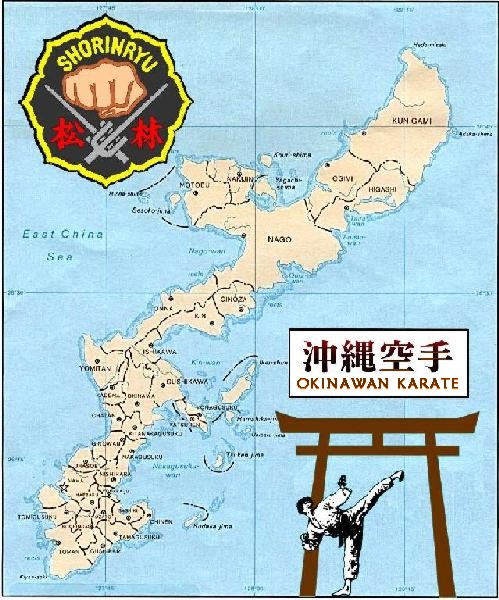Birthplace of Shorin-Ryu,
Matsubayashi-Ryu Karate-Do

PREFACE:

PREFACE:
At their height, the Okinawan people were renowned seafaring traders. Their trading routes include such (then) far away locations as the Phillipines, Vietnam, Thailand, Indonesia and Malaysia. Rather impressive for a kingdom whose population totaled only 100,000 in the 16th century.
Okinawa remained an independent, prosperous kingdom before being conquered by the Japanese Shimazu clan in 1602. in 1609 the Ryukyu islands were "given" to the Satsuma under the Shimazu clan. The proud Ryukyu Kingdom would never again be free and independent.
Under Japanese rule every attempt was made to dismantle Okinawan heritage and culture Okinawan to bring the islands more "in-line" with their Japanese occupiers. The Okinawan language and dialects were basically outlawed. When children spoke Hogen in schools they were forced to wear a placard around their neck known as a "Hogen-fuda" (dialect disgrace tag). This practice continued until the 1960's.
(Okinawa-ken-shi 1. Tsushi [An Outline History of Okinawa Prefecture]
"Roughly speaking, modern Okinawa has gone through the process of unification
and assimilation into Japan's imperialist system. It was subjected to a system of indoctrination in which the local culture and people's thinking were forcibly changed into an ideology based on loyalty to the Emperor and the fatherland. The Battle of Okinawa was an extreme manifestation of kominka (subjugation to the Emperor system). At the same time, attempts at assimilation brought about open prejudice and discrimination directed toward native Okinawans. More than 90 days of the heavy bombardment called "the iron storm" looked as if they would completely annihilate Okinawa itself. Notwithstanding the devastation of the battle, the people of Okinawa courageously rose out of the ashes of the ruins and proved that they would not perish."
cited in Arasaki's Profile of Okinawa: 100 Questions and Answers)
During WWII many Okinawans were forcible drafted into the Imperial Japanese Armies. This draft resulted in many Americans believing Okinawans and Japanese were one people; they are not. At the same time, during the battle for Okinawa, the Japanese military delcared anyone speaking the traditional Okinawan language would be regarded as a spy.
 Wonder Okinawa Official Prefecture Page
Wonder Okinawa Official Prefecture Page
 Uchina Guchi - The Language of Okinawa
Uchina Guchi - The Language of Okinawa
 The Yakuza (Japanese Mafia)
The Yakuza (Japanese Mafia)
 The Yakuza Part 2 - .PDF File From Bizarre Magazine, February 2012 (Visit http://www.bizarremag.com/ - WARNING "MATURE" site)
The Yakuza Part 2 - .PDF File From Bizarre Magazine, February 2012 (Visit http://www.bizarremag.com/ - WARNING "MATURE" site)
 Torii Station Spook Page
Torii Station Spook Page
 Archives of Ryukyuanist Newsletter Okinawan Peace Network of Los Angeles
Archives of Ryukyuanist Newsletter Okinawan Peace Network of Los Angeles
 A Brief History of the Uchinanchu (Okinawans) Okinawan Peace Network of Los Angeles
A Brief History of the Uchinanchu (Okinawans) Okinawan Peace Network of Los Angeles
 Okinawan News at Japan Update
Okinawan News at Japan Update
 Thesis on the importance of keeping the Okinawan Langauage alive
Thesis on the importance of keeping the Okinawan Langauage alive
 New York Times Okinawans Protest Japanís Plan to Revise Bitter Chapter of World War II
New York Times Okinawans Protest Japanís Plan to Revise Bitter Chapter of World War II
 San Francisco Chronicle: Japan's textbook case of revisionist history
San Francisco Chronicle: Japan's textbook case of revisionist history
 New York Times: Okinawa Suicides and Japan's Army: Burying the Truth?
New York Times: Okinawa Suicides and Japan's Army: Burying the Truth?
 Bloomberg.com
Japan Says Some Okinawans Died Under Army Orders During Wartime
Bloomberg.com
Japan Says Some Okinawans Died Under Army Orders During Wartime